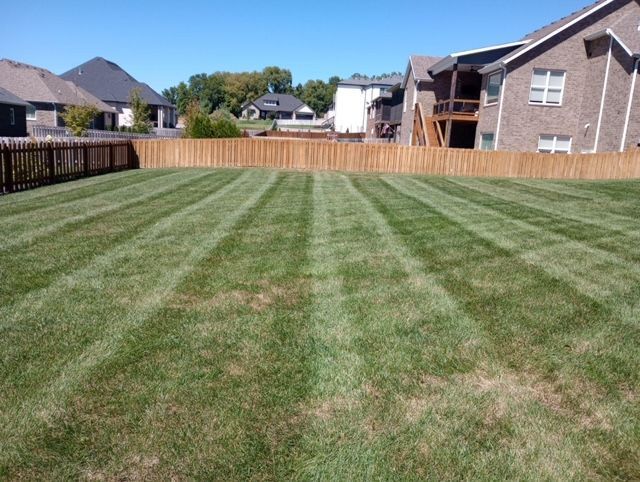Lawn Fertilization
Lawn Fertilization: What You Need to Know
Fertilizers are an essential component in the creation of a beautiful lawn, which is not something that occurs naturally but rather is the result of careful treatment, nurturing, and ongoing maintenance. In the same way that people and animals require nutrients for growth, plants likewise require nutrients to thrive. In situations where these nutrients are in short supply, it is essential to use lawn fertilizer to stimulate proper growth and performance.
A soil test can tell you what nutrients your soil is lacking, which is the initial step in making the appropriate decision when it comes to fertilization your grass or the process of lawn fertilization. Lawns that aren’t fertilized have to get all of the nutrients they need from the soil, and as a result, they don’t turn out very well.
What Is Lawn Fertilization?
The Lawn fertilization process involves applying substances or mixes that are intended to boost the levels of one or more of the necessary plant nutrients. Fertilizers are essential to healthy grass.
You may get a healthy lawn that is lush and green by lawn fertilization yard. Nitrogen is the essential component of a lawn’s fertilizer, and different types of grass have other nutrient requirements in order to achieve their full potential in terms of both growth and performance.
You can guarantee a healthy and beautiful lawn by fertilizing and maintaining it regularly.
Nitrogen (N), phosphorus (P), and potassium are the three most important macronutrients that may find in fertilizers (K).
1. Choose the Right Fertilizer for Your Grass
The person who owns the lawn can choose the fertilizer to use on their grass. The landowner has several options to pick from when it comes to fertilizers, all of which can be obtained at nearby gardening shops. Organic fertilizers and synthetic fertilizers are the two categories that may be used to classify fertilizers.
2. Fertilizers with a Gradual Release
It is strongly suggested that you fertilize your lawn with a product with a slow release of nitrogen. Your grass will develop in an even and consistent manner when you use this kind of fertilizer.This will guarantee that an appropriate supply of nitrogen and any other nutrients required for the growth of your tufts is delivered. Slow-release fertilizers reduce the frequency of fertilizing, which is one of its benefits.
3. Fast-Release Fertilizers
The grass consumes fast-release fertilizers in the same manner that is suggested by the name of these products. It enriches the soil with nutrients and speeds up the process of the grass turning green. They are widely accessible and inexpensive, but there is a significant danger that they will burn your grass.Since the effects of fast-release fertilizers wear off very quickly, they need to be applied more regularly.
4. Lawn-Starter Fertilizer
The purpose of this particular kind of fertilizer is to encourage the growth of fresh grass seeds. It has a very high concentration of phosphorus, which helps to consolidate and strengthen the roots of newly grown grass.
5.Winterizer Fertilizer
The nutrients in the lawn will be improved by using this fertilizer, just in time for winter. In most cases, it is done in the later part of the fall. If you have a lawn that grows throughout the excellent season, you should use a Winterizer fertilizer high in nitrogen.Additionally, a winterized one that is low in nitrogen but high in phosphorus and potassium is the one that should be used for warm-season greens.
6. Fertilizer for Weed and Animal Feed
This form of lawn fertilizer may do two tasks at once:
- It can fertilize the soil
- It can prevent weeds from growing
There are several varieties of this fertilizer; thus, it is imperative that you select the one that is most suitable for your lawn fertilization.It is important to remember that this fertilizer typically contains herbicides, which prevent seed germination and should not be used on newly planted grass.
Different Types of Soil and Their Suggestions for Lawns
The soil is the basis of every attractive and healthy lawn; it is the repository for the nutrients necessary for the grass to grow.
Unhealthy soil is the root cause of many of the issues that occur with grass. Sand, silt, clay, and loam should all be present in the proper amounts for soil to be considered in good health.
When water is applied to the grass, the loam soil not only holds onto the water but also allows it to drain effectively. Because it can retain nutrients and at the same time let air pass through it, this soil is excellent for your yard.
━ Wraping It Up ━
If you observe that your grass is becoming yellow or wilting, it is time for lawn fertilization since it is deficient in nutrients. The beauty of the yard lies in the lushness of its vegetation. Plants, like humans, require nutrients to maintain their health. You have some research to determine what kind of fertilizer is best for your grass and how to put it down.




